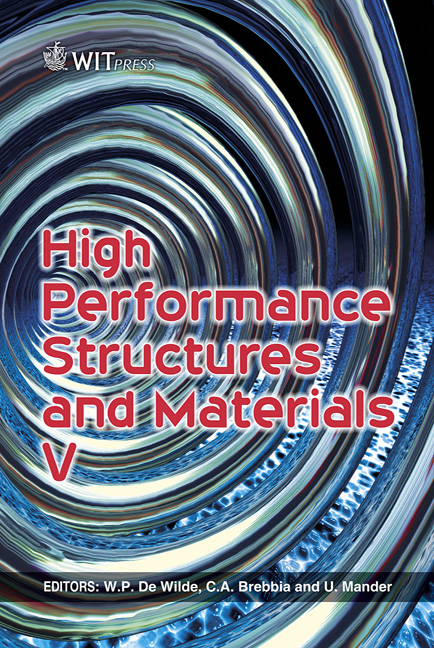Optimization Of Process Parameters For Electrophoretic Deposition In CNTs/carbon Fiber Hybrid Composites
Price
Free (open access)
Transaction
Volume
112
Pages
10
Page Range
291 - 300
Published
2010
Size
1,167 kb
Paper DOI
10.2495/HPSM100271
Copyright
WIT Press
Author(s)
Y. Q. Wang, J. H. Byun, B. S. Kim & J. I. Song
Abstract
Carbon nanotubes (CNTs) have attracted a great deal of interest in the development of high-performance engineering composites, due to their exceptional physical, mechanical, electronic and thermal properties. Incorporation of CNTs into polymer has shown great improvements in the functional property, however, the enhancement of the mechanical property was insignificant compared with that of micro-sized fiber reinforced polymers. In order to realize the application of composites for structural and multifunctional parts, it is necessary to develop hybrid composites with micro- and nano-sized reinforcements. CNT reinforced hybrid composites have been studied in several ways: the addition of CNTs to a matrix with various dispersion methods, the growth of CNTs on substrate reinforcements, CNT sprays, etc. In this study, the electrophoresis deposition (EPD) method has been applied to deposit CNTs on a carbon fabric. By applying an electric field between a copper plate and a substrate, the negatively charged CNTs in a suspension move toward a carbon fabric. The controllable parameters in the EPD process are identified as the deposition time, the voltage, the contents of the CNTs, and the distance between the copper plate and the carbon fabric. In order to determine the optimal process conditions, the Taguchi method for the statistical design of experiment (DOE) has been utilized. Since the interlaminar shear strength (ILSS) of the hybrid composites is associated with the amount and the degree of distribution of the CNTs, it was selected as the response for the analysis of means (ANOM) and signal to noise (S/N) ratio. The ILSS was measured by short-beam test according
Keywords
carbon nanotubes, electrophoretic deposition, interlaminar shear strength, optimization, Taguchi method, signal to noise ratio





